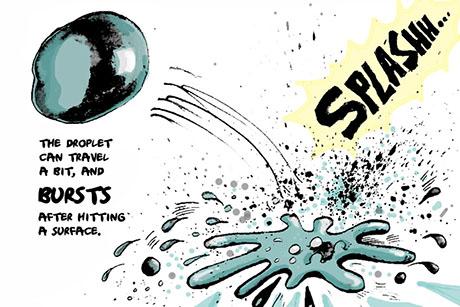Faculty Spotlight: Professor Ioannis V. Yannas
In 1969, Professor Ioannis V. Yannas was an expert on fibers and polymers at MIT when Dr. John F. Burke approached him with a request for help in treating burns
A Lifetime of Biomaterials Engineering Achievement
by Alissa Mallinson

Professor Ioannis V. Yannas
Photo courtesy of Professor Yannas
In 1969, Professor Ioannis V. Yannas was an expert on fibers and polymers at MIT when Dr. John F. Burke approached him with a request for help. A surgeon, Burke had made significant strides in burn treatment but was still missing a piece of the puzzle.
“He wanted something to keep the bacteria out,” said Yannas, “and keep the moisture in.”
Human skin and pig skin, which were often used in burn treatments, were commonly rejected by the body’s immune system, and the immune suppressants given to patients left them vulnerable to infection. The other obstacle was dehydration. No one had yet found a way of building skin that could absorb and maintain moisture.
With a bachelor’s degree in chemistry from Harvard College, a master’s degree in chemical engineering from MIT, a second master’s degree in physical chemistry from Princeton University, and a PhD in physical chemistry from Princeton, Yannas was a good choice to help Burke with his mission.
Weaving together their collective expertise in engineered polymers and biology, the two teamed up to create the first artificial skin.
But getting there wasn’t easy. The skin’s delicate intricacies were difficult to replicate, and the recipe for success was incredibly specific. A patient’s real skin couldn’t regenerate if the artificial skin’s pores weren’t between 20 and 120 millionths of a meter, for example. It also had to naturally degrade in a specific time frame – too long and it would block growth of new skin; too short and the new skin wouldn’t have enough time to fully regrow.
As it turned out, Yannas’s skin did more than just block infection and retain moisture – it actually helped to regenerate the skin. The trick was adding a synthetic layer of silicone on top of a layer of organic “scaffolding” – a combination of molecular material from cow tendons and shark cartilage. The synthetic layer protects the skin from bacteria and infection and keeps the moisture in, while the organic layer acts as a cornerstone on which new healthy skin cells can grow.
The artificial skin was a lifesaver for many patients – not just those fighting significant burns, but those with chronic skin problems too, such as diabetics who have wounds that won’t heal due to poor circulation.
Since then Yannas has built on his regenerative breakthroughs, applying some of the principles he discovered in the process of developing artificial skin to other areas of medicine as well, such as tissue, cartilage, bone, and nerve regrowth.
Harvard Medical School Professor Myron Spector, a close collaborator of Yannas for more than 20 years and an expert in biomaterials and tissue engineering, says, “In addition to resulting in a highly successful treatment for a broad spectrum of skin injuries and diseases, which alone would have been a life’s achievement, the research that Yanni has conducted over the past three decades in developing a collagen-based regeneration template has led to many significant advancements. He has proved the validity of certain principles guiding regeneration and has provided a groundbreaking model for medical device development and what is now termed ‘translational research.’”
Yannas’s regeneration principles and the collagen scaffolding he invented have spawned at least four start-ups founded by prior students, postdoctoral fellows, and residents, with products to treat defects in the meniscus of the knee, articular cartilage, bone, and the eye.
Professor Ioannis V. Yannas is a member of the National Academy of Sciences (Institute of Medicine) and the Association for the Advancement of Science, a founding fellow of the American Institute of Medical and Biological Engineering, and a charter member of the Biomedical Engineering Society, among others. He has won numerous awards, including the Doolittle Award of the American Chemical Society and the Clemson Award for Applied Science and Engineering from the Society of Biomaterials.


